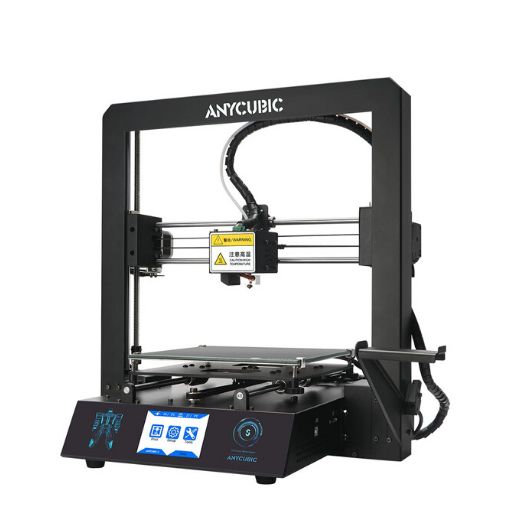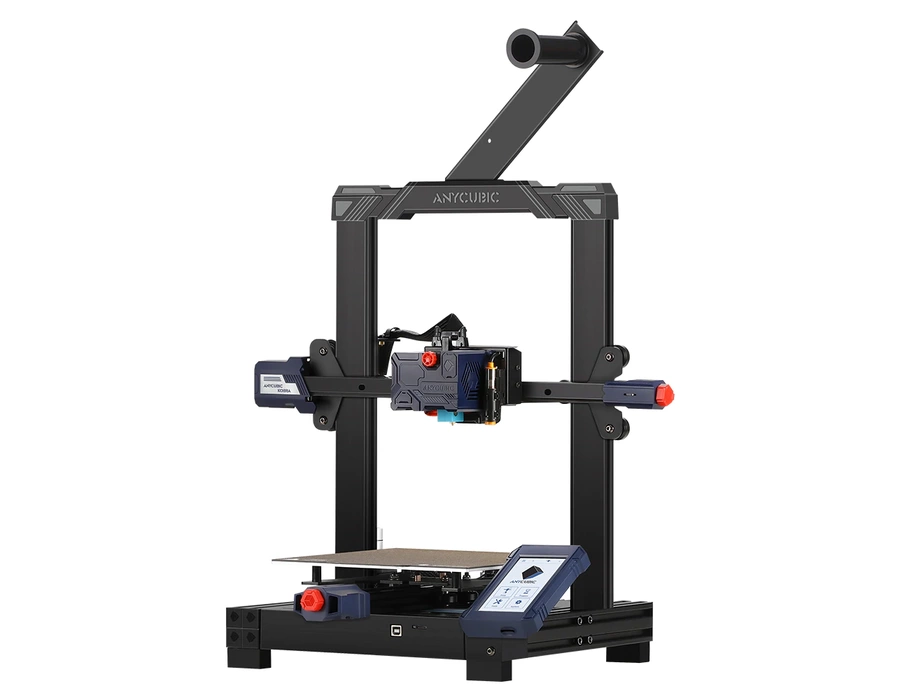Compare Mega S vs Kobra
Comparison between the best 3D printers
Choose the best 3D printer at the best price. The cheapest 3D printers are here.
Buy a 3D printer here with 3D Fila.
 |
 |
|
| Model | Mega S |
Kobra |
| Printing Material | Filament | Filament |
| Buy Filament for Anycubic Mega S | Buy Filament forAnycubic Kobra | |
| Estimated price | $149,00 | $259,00 |
| Manufacturer | Anycubic | Anycubic |
| Release Year | 2019 | 2022 |
| Print Volume [mm] | 210x210x205 | 220x220x250 |
| Printer Size [mm] | 405x410x452 | 486x430x486 |
| Weight [kg] | 14,5 | 7 |
| Power Loss Recovery | YES | YES |
| Enclosed printer | NO | NO |
| Bed Leveling | Manual | Automatic |
| Filament End Sensor | YES | NO |
| Bed type | Heated | Heated |
| Power supply system | Bowden | Direct Drive |
| Standard nozzle | 0,4 | 0,4 |
| Maximum Nozzle Temperature [°C] | 260 | 260 |
| Maximum Bed Temperature [°C] | 110 | 110 |
| Maximum printing speed [mm/s] | 100 | 180 |
| Filament holder | YES | YES |
| Camera for supervision | NO | NO |
| Recommended filaments | PLA, TPU, ABS, PETG | PLA, PETG, Tritan, Flex, ABS |
| Recommended slicers | Cura, Simplify, Slic3r | Cura, Simplify, Slic3r, IdeaMaker |
| Maximum Resolution [mm] | 0,1 | 0,1 |
| Processor | 8 bits | |
| Display | Touchscreen TFT 2,8'' | Display touchscreen 4,3'' |
| Power Supply | 12V / 300W | 110/220V / 400W |
| Connectivity | SD / USB | SD / USB |
| Operating systems | Windows, Mac, Linux | Windows, Mac, Linux |
| Date of registration in the system | 2021-04-15 | 2022-11-09 |
| Release date | 2019 | 2022 |
| Extra features | The Anycubic Mega S offers a printing platform with excellent adhesion, easy removal after cooling. It has a filament sensor for a better experience with flexible materials and a multilingual and intuitive color touchscreen. Assembly is quick, requiring only 8 screws and 3 connections. It has a large build volume (210 x 210 x 205 mm), high positioning accuracy and supports a variety of materials, including TPU, PLA, ABS and wood. It stands out for its solid metal structure, superior stability, high-quality printing with layer resolution of up to 50 microns, Ultrabase for easy adhesion and removal of parts, resumption of printing after power outage, high-quality extruder for flexible filaments, suspended filament support and stable structure that reduces shaking, improving printing quality. | The Anycubic Kobra features automatic bed leveling and a direct extruder for easy filament handling. The print bed is coated with PEI on a flexible steel plate, improving adhesion and making prints easier to remove. The printer features sensorless homing and is designed to be easily disassembled for easy maintenance and customization. |
| Support for multiple colors and materials (AMS and CFS) | NO | NO |
Notes * |
||
| Cost-benefit | 6 / 10 | 7 / 10 |
| Hardware | 2 / 10 | 2.1 / 10 |
| Tela | . | . |
| Print volume | 3 / 10 | 3 / 10 |
| Performance | 0 / 10 | 1 / 10 |
Conclusion |
| In comparing the Anycubic Mega S and the Anycubic Kobra, several key factors emerge that can aid in making an informed purchasing decision. The **Anycubic Mega S**, while being a more budget-friendly option, provides a solid performance with features like a filament sensor, manual bed leveling, and a slightly smaller but sufficient print volume. Its design focuses on ease of assembly and stability, making it a great choice for users looking for reliability without breaking the bank. The ability to support a variety of filaments alongside its impressive adhesion features further enhances its appeal for novices and seasoned users alike. In contrast, the **Anycubic Kobra**, though at a higher price point, introduces notable advancements such as automatic bed leveling and a direct drive extruder. These enhancements simplify the setup process and improve filament handling, which can significantly enhance the user experience, especially for those who prioritize convenience and efficiency. The Kobra’s slightly larger print volume and better maximum printing speed offer additional benefits for users who may require more extensive projects. Considering both printers' features and prices, the choice largely depends on user requirements. The Mega S provides excellent value for those prioritizing affordability and do not mind the manual setup. Meanwhile, the Kobra suits users willing to invest more for ease of use and advanced features. Ultimately, both models hold their own in terms of performance, but the choice should align with individual printing needs and budget considerations. |

